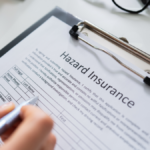Insurance is a safety net, offering financial security and peace of mind when life throws us curveballs. We count on home, auto, and health insurance policies to protect our belongings and well-being.
But here’s the unfortunate truth: some people try to take advantage of the system by making false insurance claims, also known as fraudulent claims. These types of claims harm the integrity of the insurance industry and drive up premiums for all of us – including you! That’s why it’s important to tackle this problem head-on.
Keep reading to dive into the world of false insurance claims, explore effective ways to dispute them, and get practical tips to prevent yourself from falling victim to such schemes.
Let’s get started!
Understanding False Insurance Claims
Before we explore how to deal with insurance scams, we have to know more about them, their impact on insurance providers and policyholders, and some everyday fraudulent activities to be on the lookout for. By gaining a deeper understanding, you’ll be better prepared to identify potential red flags and take action when faced with fraud.
The Nature of False Insurance Claims
When we use the terms false or fraudulent insurance claims, we’re referring to deliberate attempts to deceive insurance providers with misleading or fabricated information in an effort to receive undeserved benefits. These claims can take various forms, including exaggerating the extent of damage or loss, misrepresenting the value of items, staging accidents or thefts, or submitting claims for incidents that never occurred.
Impact of False Insurance Claims on Insurers and Policyholders
False insurance claims pack a punch for both insurance providers and policyholders alike. Insurance companies take a hit in the wallet, experiencing financial losses and higher administrative expenses due to fraudulent claims. To compensate, they might hike up premiums or scale back coverage options.
Unfortunately, this means honest policyholders end up having to pay more for insurance or having to deal with limitations on necessary protection. It’s a challenging situation that undermines the sustainability of the insurance system and jeopardizes the ability of people like you to get affordable coverage.
Examples of Fraudulent Insurance Claims
Being familiar with common types of insurance fraud can sharpen your radar for potential red flags and keep you on your toes.
Here are a few examples of false insurance claims to watch out for:
- Exaggerated Loss or Damage: This involves inflating the value of lost or stolen items or the extent of damage to property to receive a higher claim payout. This deceptive practice increases the financial burden on insurance providers and contributes to rising premiums for all policyholders.
- Staged Accidents: Some scammers deliberately cause damage to vehicles or property — or orchestrate accidents outright — to make a claim. Such incidents — like arson — not only put innocent lives at risk but also result in higher insurance premiums for everyone due to increased payouts.
- False Personal Injury Claims: This involves fabricating or exaggerating the severity of injuries to claim compensation for medical expenses, lost wages, or pain and suffering. This type of fraud not only drains resources from insurance providers but also undermines the fairness and trust of the entire insurance system.
- Identity Theft: Stealing someone’s identity to file fraudulent insurance claims on their behalf, such as healthcare or life insurance claims, not only causes financial harm to the victims but also leads to tighter security measures and increased costs for all policyholders.
5 Steps to Dispute a False Insurance Claim
When faced with a false insurance claim, knowing how to effectively dispute it is key. This section will provide a step-by-step guide outlining the five actions you can take to challenge a fraudulent claim made against you.
- Review the Claim: Start by closely examining the claim details and look for inconsistencies or questionable aspects. Watch for warning signs like conflicting timelines, contradictory statements, or a lack of evidence, which could signal a fraudulent claim. Conducting a thorough assessment sets the stage for a strong rebuttal.
- Collect Evidence: To back up your case, gather all the necessary paperwork, like photos, videos, receipts, and witness statements. This will not only bolster your positioning but also paints a clearer picture of the facts surrounding the disputed claim. The more concrete evidence you have in your corner, the greater the likelihood of effectively challenging the fraud.
- Inform Your Provider: Tell your insurance company about your concerns and explain why you question the claim. You both want a positive outcome, so offer to assist in the investigation.
- Cooperate with Investigations: Work closely with any assigned investigators by making yourself available to provide any additional information or assistance they may need to resolve the dispute. Your cooperation will play an important role in finding a fair resolution.
- Get Legal Advice: Contact a lawyer specializing in insurance disputes to understand your rights and explore the legal options available. An experienced attorney will guide you through the complexities of the dispute process, protect your interests, and help you make informed decisions about the best course of action.
Tips for Preventing False Insurance Claims
Prevention is the key to combating false insurance claims. So we pulled together some practical tips and strategies to help keep you from falling victim to insurance fraud — or at least staying one step ahead of potential scams.
Get to know the ins and outs of your policy: Familiarize yourself with the terms and conditions of your insurance policy, understanding the coverage limits, exclusions, and requirements for filing a legitimate claim. Once understood, you’ll be able to confidently navigate the claims process and be certain that any submissions you make are flawless.
Be diligent with documentation: Be meticulous with your assets, valuable possessions, and policy documents. Organized records may serve as a point of reference if disagreements arise. Clear and thorough documentation reduces the likelihood of misunderstandings or misinterpretations. They’ll make it easier to validate your claims, build trust with your insurance provider, and help protect you against potential fraud accusations.
Report suspicious activities: If you notice anything fishy or suspect someone is trying to pull off an insurance scam, don’t hesitate to report it immediately to your insurance provider or the relevant authorities. Reporting such activities not only safeguards your own interests but also helps protect other policyholders from the same type of fraud.
Keep up on emerging patterns: To stay in the know, use Google or Twitter to follow topics like “insurance fraud trends” to receive the latest news. By educating yourself on evolving strategies, you’ll minimize your vulnerability. Remember, being proactive and well-informed is your strongest defense when it comes to insurance fraud.
Stay vigilant
False insurance claims create a big problem for insurance companies and policyholders. But don’t worry; we’ve got you covered! By understanding what false insurance claims are all about, knowing how to handle them like a pro, and taking preventive measures, we can work together to tackle this issue head-on.
If you suspect a claim is fraudulent, reach out to us. We’ll review the situation together and discuss the best way to resolve it.









